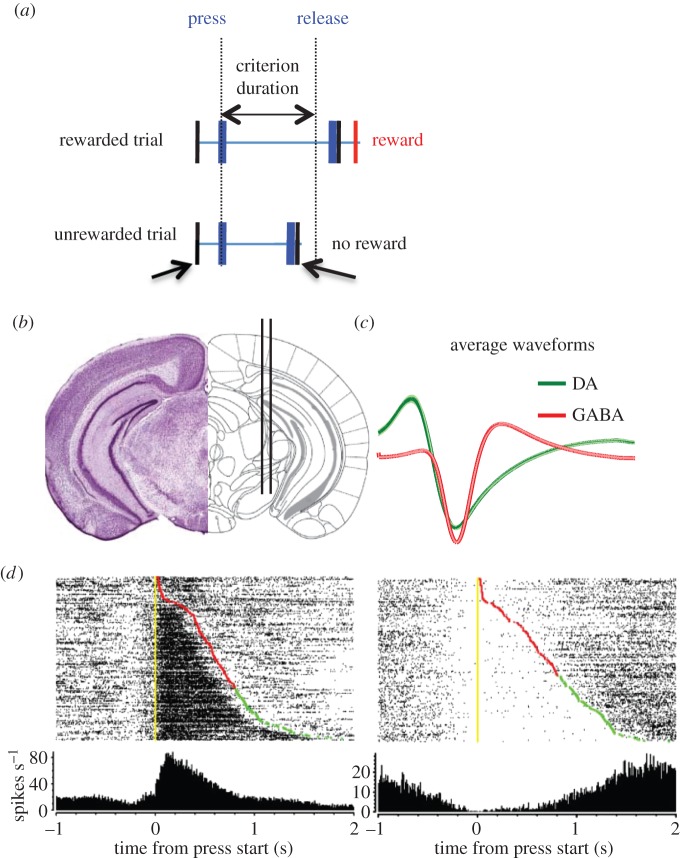Figure 3.
Opponent outputs from the basal ganglia. (a) Illustration of the duration differentiation task [33,35]. Mice must press a lever and hold it down for a minimum amount of time in order to earn a food pellet. Only after the lever is released is the trial outcome revealed (reward or no reward). (b) Illustration of the electrode implant into the substantia nigra. (c) The positioning of the electrode array allows simultaneous recording of activity from dopaminergic and GABAergic neurons, which can be distinguished on the basis of their action potential waveforms. (d) Raster plots showing typical ‘action-on’ and ‘action-off’ GABAergic neurons. Each row is a single trial from a temporal differentiation session. Yellow markers indicate ‘lever start’; red markers indicate ‘lever end unrewarded’; green markers indicate ‘lever end rewarded’. The trials are sorted according to the duration of the lever press, starting with trials with the shortest action durations on top.

